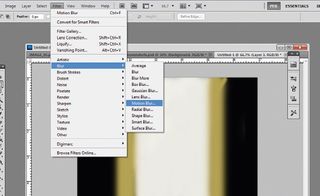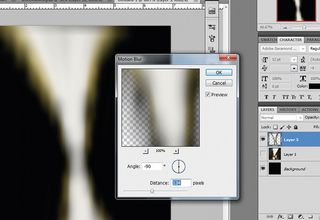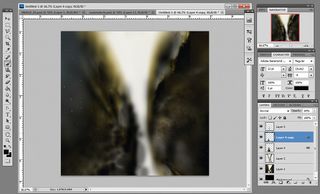Building tomorrow’s web experiences
Prior to its Create the Web conference rolling into London, Adobe hosted a round-table event to discuss the challenges facing today’s designers and how open standards are stepping up to meet them. Martin Cooper took a seat
This article first appeared in issue 236 of .net magazine – the world's best-selling magazine for web designers and developers.
There has never been a more challenging, exciting or rewarding time to be involved with web creativity. Technologies such as HTML5 and CSS3 are affording designers and developers opportunities like never before. Of course, this rise in technical possibility is fuelling ever-escalating expectations among users. They expect rich experiences, whatever the device on their desktop or in their pocket or hand. And you can be sure that as hardware continues to develop, shifts shape and gets ever smaller, the hunger for brilliance will continue to gnaw.
To embrace and energise this wave of change and possibility, Adobe has taken its Create the Web conference on a world tour. The event’s mission is simple: to promote and progress the debate about standards-based design. The London session promised keynotes and technical presentations from speakers of the calibre of Divya Manian, Sally Jenkinson of Lightmaker, Lee Brimelow, Grant Skinner and Michal Chaize. Create the Web also promised to be a forum for discussion about Adobe’s Edge Tools and Services.
On the eve of the show’s London leg, Adobe hosted a round-table debate. Along with some of the business’s most forward thinkers, we made ready in a basement just off London’s Oxford Street. With the camera rolling, lights blazing and mineral water flowing, we set to discussing the state of web creativity and its immediate future.
Ryan Stewart, Adobe Adobe has been doing a lot to move the web forward. As a creative company, we always want to have richer platforms for our customers – and with HTML5 and with CSS3 we’re at a point where the web is a really great place for creatives to deploy rich content and cinematic experiences. Where would you say the modern web is today in terms of those graphical capabilities?
Grant Skinner, gskinner.com Decent, and getting better very quickly. We have things like CSS 3D which we took advantage of a lot in Atari Arcade. Me and my team are really looking forward to CSS filters. They can’t get here fast enough. And we do a lot of work with canvas to drive games and really rich stuff that goes beyond what the platform was designed to do.
Ryan Stewart So many of these features get added to a single browser. We have the prefixing issue where you have WebKit prefixes … Mozilla prefixes … so how does that effect your day-to-day development experience?
Dru Hill, Possible Most of the time when you’re building you’re aiming at the top end of browsers, but not the clients we work with. They’re still looking at browsers like IE6. A lot of the time you can say: “The things you’re aiming for aren’t going to work.” As long as you come up with a decent backup you can keep clients happy.
Ryan Stewart How important would you say the rich graphical capabilities are to enterprise applications and to consumer applications?
Bola Rotibi, Creative Intellect UK I can imagine that somebody like a medical equipment provider will want some very, very rich, hi-tech graphics. If they’re using the web for some of their apps and their products, then yes, I think it will be very important. I still think it’s a long way behind a consumer audience, which is much more sophisticated in terms of what they expect – and so their expectations are higher.
Grant Skinner I think that means consumer expectations actually go up. They’re no longer willing to make compromises to accommodate the technology. So they look at a magazine and they say: ‘Why can’t my web pages be laid out that way?’ They look at the interfaces on games and experience on the web and they ask: ‘Why can’t similar experiences on the web be the same?’ Workers are also consumers, and so they bring that into the enterprise and they start making demands for how their intranets work.
Dru Hill If they use a mobile device, a lot of them just want the data they want – the information they want – as quickly as possible. They don’t necessarily want the extra richness.

Mike Chambers, Adobe Given a choice between an application that has a wall of data [and] an application that has the data but also offers a richer experience – and rich can just be a better design – I think users are going to choose a richer experience. It’s more pleasurable to use. It’s more pleasurable just to look at. It goes deeper too – all of a sudden there’s new stuff, and people who love this stuff start pushing on the edges and this is creating new experiences – it gets people excited. We’re doing this Create the Web tour, and that’s why we call it Create the Web. It’s these experiences that people create on the edge that push web design, that push the browser vendors to go in certain directions – and it pushes the expectation in those directions. There are a lot of people in the Flash community that are starting to do more motion graphics in the browser, and these are people that worked with a pretty well-defined technology for a long time. In my experience it’s intimidating coming into this space, and an intimidating community.
Grant Skinner Event handling: you can be working with events and you can be working handlers … you can be working one of many different frameworks that’ll handle it for you. I think, in order to be successful, you have to pick a domain. You need to do some general research, pick some things that make sense to you, and dig deep into those and then start expanding out broadly.

Flash developers have a lot of advantages coming into this space because they know how to build interactive content, they know how to work with transitions, and they know how to work with stateless applications. Traditional web developers, they know the language, and they have a decent grasp of the APIs…
Mike Chambers People like Brandon Hall, Seb Lee-Delisle, Grant Skinner – a lot of the very early people do this on very expressive, generative, art type experiences – a lot of Flash people are doing it. And now, with something like Edge, it’s spitting out JavaScript code, which is great. Everyone can see that code, and everyone can see what’s going on in there.
Ryan Stewart How critical is open source to guys when it comes to building stuff for the web?
Grant Skinner I think it would be almost impossible to build big projects on the web without open source. I think people are pretty eager to get involved and help make the things they use better.
Mike Chambers How big a role do you think something like GitHub has played in pushing that forward? It makes it very easy to fork a project.
Grant Skinner Massive! It makes it manageable. It’s like a single process that people can learn once and apply across multiple projects. It’s huge.
Mike Chambers It’s interesting seeing the reaction internally in Adobe to how successful Brackets was. It was really exciting to see all the excitement around that. I think a lot of that was because Brackets was built on web technologies, and a lot of it was because an editor is something that everyone uses every day. It was interesting to see the reaction internally at Adobe to how successful Brackets was as an open source project, and now other projects want to start exploring that avenue.

This event was held at London’s Oui Rooms as part of Adobe’s Create the Web conference.
Find the best online web design training tools at our sister site, Creative Bloq.

Thank you for reading 5 articles this month* Join now for unlimited access
Enjoy your first month for just £1 / $1 / €1
*Read 5 free articles per month without a subscription

Join now for unlimited access
Try first month for just £1 / $1 / €1
Get the Creative Bloq Newsletter
Daily design news, reviews, how-tos and more, as picked by the editors.
The Creative Bloq team is made up of a group of design fans, and has changed and evolved since Creative Bloq began back in 2012. The current website team consists of eight full-time members of staff: Editor Georgia Coggan, Deputy Editor Rosie Hilder, Ecommerce Editor Beren Neale, Senior News Editor Daniel Piper, Editor, Digital Art and 3D Ian Dean, Tech Reviews Editor Erlingur Einarsson and Ecommerce Writer Beth Nicholls and Staff Writer Natalie Fear, as well as a roster of freelancers from around the world. The 3D World and ImagineFX magazine teams also pitch in, ensuring that content from 3D World and ImagineFX is represented on Creative Bloq.
